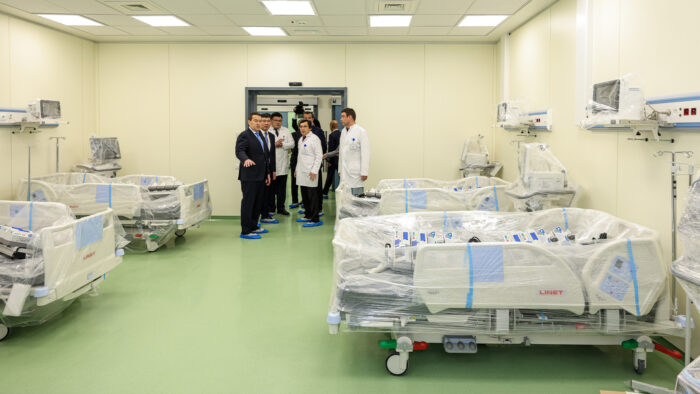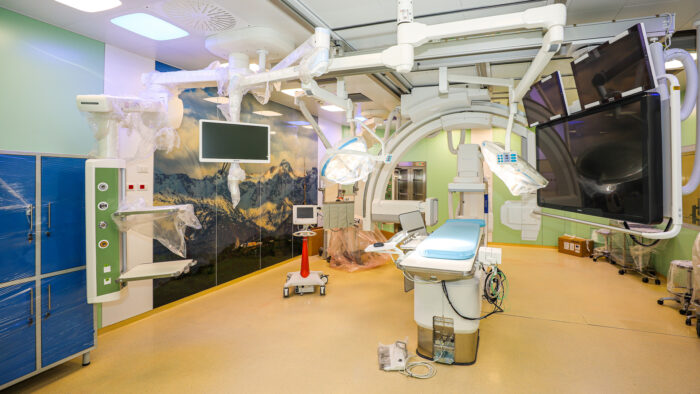ASTANA – The Kazakh capital will open a new National Research Oncology Center (NROC) equipped with state-of-the-art technology next year, reported the Prime Minister’s press service on Oct. 18. The facility will feature Central Asia’s first proton center to treat 800-1,000 patients annually.

Photo credit: Prime Minister’s press service.
Prime Minister Alikhan Smailov toured the center, which includes a diagnostic and treatment facility with 210 beds, radiation and nuclear medicine centers, a proton therapy center, and administrative and technical sectors.
Leading international companies from Switzerland and the United States are involved in this budgetary investment initiative.
According to Sanzhar Shalekenov, oncologist and the head of the NROC, the novel medical establishment, projected to assist 6,000 patients yearly, is designed to conduct radionuclide diagnostics, produce radiopharmaceuticals, and conduct radionuclide therapy.

Photo credit: Prime Minister’s press service.
“We will provide beam radiotherapy with five devices: one for contact radiation therapy and four more for non-contact treatment. These devices include Edge, Turbine, and Ethos. Some of them are presented in Kazakhstan for the first time,” he said.
The center also includes a hematology oncology unit with 15 beds for bone marrow transplantation. It is planned to perform 180-200 transplantations per year.
According to Shalekenov, the NROC’s second block will house a scientific and educational center, a hospital with 140 beds, three operating rooms, and a large diagnostic clinic.

Photo credit: Prime Minister’s press service.
During his visit to the new medical center, Smailov noted that Kazakhstan records over 37,000 cancer diagnoses and witnesses more than 13,000 related deaths each year. The new center aims to positively impact these statistics.
Smailov directed the Healthcare Ministry, in collaboration with the primary contractor, to ensure the center’s inauguration, inclusive of the proton therapy segment, by Aug. 1 of the upcoming year.
On October 6, Smailov signed a government decree approving the Comprehensive Plan to Combat Cancer Diseases for 2023-2027. The document focuses on introducing highly effective early diagnosis, developing specialized treatment and rehabilitation, as well as enhancing human resources and science.


